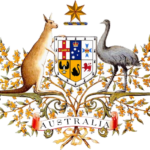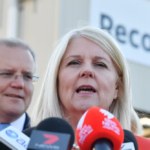Time to revive Rudd’s Asia Pacific vision
Charles Jian-Zhao Phang | September 9, 2010
The proposed Asia Pacific Community (APC) is not just another APEC or ASEAN and a government who "understands concerns about boats" should take a second look at it.
In 2008, former Australian Prime Minister Kevin Rudd put forward a grand vision to create a regional organisation which would bring together all the countries in the Asia Pacific, to address a diverse range of issues including security, terrorism, trade, diseases and natural disasters.
The proposed Asia Pacific Community (APC) had considerable potential for improving regional security and encouraging multilateral cooperation between nations. Unfortunately, the project was shelved by Julia Gillard after she ousted Rudd as Prime Minister in June 2010, just when countries across the region were starting to pledge their support for his vision.
Although the recently reinstated Labor government remained silent about foreign policy throughout its election campaign, academics are certain it will not resume establishment of the APC. Associate Professor Jie Chen, a lecturer in International Relations at the University of Western Australia, has even described Rudd’s proposal as “history.” If Chen is right, this will be a lost opportunity for regionalism in the Asia Pacific.
It is absolutely vital that the government recommits to building the Asia Pacific Community as it seeks to create stability in an unpredictable region, which will in turn safeguard Australia’s interests.
Australia is currently a sitting duck in a hostile region plagued by a number of security issues which might trigger the outbreak of war at any given time, with North Korea being the most prominent example.
China is also a major contributor to instability in the region. The rising superpower is a big supplier of arms to countries such as Myanmar and Thailand, in which the military have been sources of tension.
Over the years, China has also been involved in a number of territorial disputes over islands in the South China Sea. Its biggest claim has been over Taiwan which it has never ruled out attacking, should the latter declare its independence.
War in either the Korean Peninsula or South China Sea could send hordes of refugees fleeing to Australia, by plane if not by boat. Following a federal election in which “boat-people” and asylum-seekers were dominant issues, it is reasonable to assume that the Australian government will not be particularly welcoming to refugees from Korea or elsewhere in the Asia Pacific.
Rudd’s proposed APC aims to prevent war in the Asia Pacific by uniting the countries of the region in a single organisation, similar to ASEAN (Association of Southeast Asian Nations). Ideally, member-states will regard each other as part of the same team, and seek to avoid conflict at all costs.
The other strength of Rudd’s proposed APC was that it sought to include the five major powers in the Asia Pacific: China, India, Japan, Russia and the United Sates.
Professor Andrew Macintyre, Dean of the College of Asia and the Pacific at the Australian National University, believes that this proposed framework for the APC will “make the region a better place,” because “it allows the key countries to discuss a full range of issues.”
China and the United States had expressed support for the Asia Pacific Community before Rudd was forced to step down as Prime Minister which means the project was on the right track.
However, there is a general misconception about the APC which needs to be addressed before the project is resurrected. Critics of the APC have argued that it is redundant because the region already has mechanisms for regional discussion, in the form of APEC and ASEAN.
It is important to clarify that APEC is merely a forum. It does not have a permanent secretariat and is therefore not an actual organisation.
Other problems with APEC include the fact that it only discusses economic issues. India is also not a member which suggests the forum does not represent the entire Asia Pacific.
As for ASEAN, it operates on the principle of consensus which means every decision has to be approved unanimously by every member-country. This has led to its failure to resolve war and territorial conflicts in the region because the parties involved would veto any decision which did not suit them.
The APC on the other hand, would not give the give right of veto to all its members. It would also have a secretariat to ensure the organisation fulfills its core role of allowing the Asia Pacific countries to work together collectively on issues of common concern.
Countries including the United States remain committed to the establishment of the Asia Pacific Community. The Australian government would just need to resume discussion on the issue, and the organisation should be operational by 2020, as originally targeted.
It would certainly be in the best interests of both Australia and the region that the government places the issue back on its foreign policy agenda.
Charles Phang is a freelance writer and Masters student studying political journalism with the University of Sydney. He previously majored in Political Science and International Relations at the University of Western Australia where he was taught by former federal ministers, Kim Beazley and Carmen Lawrence.
SHARE WITH:














les pickett
September 10, 2010 at 7:20 am
ASIA PACIFIC VISION
Strongly support the concept but really challenge the need for a new organisation. Surely it is possible to redefine the purpose of APEC and there are already moves afoot to admit India. If the various parties involved cannot agree to enhancing an existing organisation what real propspect is there of them agreeing to a new one that delivers?